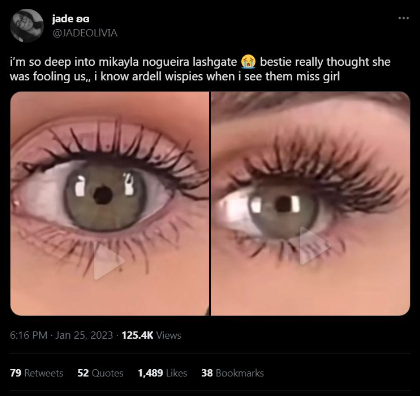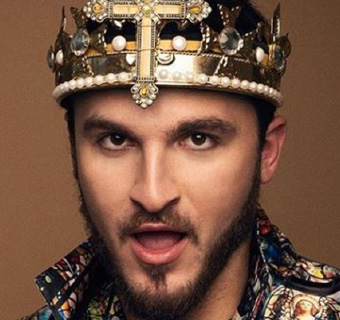Table of Contents
Influencer marketing is the next best thing the marketing industry has for word-of-mouth marketing–influencers’ audiences trust their opinions on the products that they promote to them. But what happens when influencers start to instead talk about all of the products that they don’t think are worth your money? We call that de-influencing.
What is “De-Influencing?”
De-influencing is the newest social media trend where influencers. Instead of promoting products or services to their audiences, influencers tell their followers about all of the products they quite frankly think everyone can live without. The de-influencing trend started within the beauty and lifestyle industry but has since moved to other areas and popular products.
Influencers discuss products that they might think are overhyped (and usually overpriced) and even might recommend an alternative that is usually a lot more affordable.
While writing this blog post, the hashtag #deinfluencing had more than 455 million views on TikTok. These TikTok videos warn against purchasing products that are not worth the money, such as the Dyson Airwrap, Summer Fridays Lip Balm, Dior’s Backstage Rosy Glow Blush, and many other expensive products.
The de-influencing trend urges consumers to think more critically about what they’re buying and why they’re buying it. Do you need that hair-styling dryer or want it because your favorite content creator told you to buy it? Maybe not.
Interested in other successful influencer marketing trends? Check out our predictions for influencer marketing trends this year here!
Why Creators Love It
The creators that have been for de-influencing want to let their audiences know that not being able to afford what influencers try to promote to you is okay. In fact, it’s normal! The de-influencing trend is trying to crack down on social media’s overconsumption problem. Discussing the well-being of younger audiences on social makes this trend especially important to prevent scams or the flaunting of wealth.
Christina Mychas, a popular TikTok fashion influencer, admits that her poor shopping habits made her financially distressed and insecure. However, Christiana has since realized that buying everything an influencer recommends is simply not worth it. Nowadays, she encourages her audience to be more frugal when shopping, especially when their favorite influencers recommend a viral product.
@christina.mychas Things i stopped buying when I decided to change my life – I used to be a shopaholic impulse buyer to my core. When I stopped buying these things, changed my money habits, and increased my income – I changed my financial future and my life. Who knew? #deinfluencing #shopaholic #impulsebuyer #buyersremorsemuch
The de-influencing trend is something larger influencers should be listening to, not participating in. Those participating in de-influencing urge influencers to realize that most of their audiences can’t afford the products or services they’re promoting. Their audience buys them, though, because of the overconsumption problem on social media as a whole, especially on TikTok right now.
It’s tax season! Do you know how to do your taxes as an influencer? Learn how here!
Why It Works on TikTok
The TikTok influencer marketing community is eating up de-influencing, but why? The TikTok audience believes that creators have been promoting overconsumption, which has become a massive problem. With that promotion of overconsumption comes the even bigger problem of more than a few influencers on TikTok that have misled their audiences by posting dishonest reviews for sponsored products or services.
Displayed below is a tweet that a TikTok viewer posted about Mikayla Nogueira having come under fire after posting an incredibly dishonest review for a product she was promoting, L’Oreal’s Telescopic Lift mascara.

In the video, Mikayla claims that the lashes on one eye had been done with the mascara she had been promoting. She then continues to apply the mascara on the other eye. As you can see from the comparison of how the mascara looks on the eye she applied it to for the video compared to how her lashes look at the end, viewers immediately knew that Nogueira had applied false lashes off-screen. This viewer that had posted the tweet could even note what brand of lashes.
Love makeup? Check out these gorgeous looks!
TikTokers Love De-Influencing Trends
In short, TikTok audiences enjoy the trend because it feels much more genuine than the sponsored and promoted posts they’re used to seeing now on TikTok. De-influencing is vastly different from the rest of the content they might see scrolling through their For You Page (FYP).
Most other content they might see is an actual ad, some other desperate attempt to go viral, or following a trend on the platform that sticks to the status quo. De-influencing is different, but it gives consumers a breath of fresh air.
Before TikTok gained as much traction as other social media platforms, it differed from Instagram because creators posted organic content that resonated with viewers. Now, as more and more creators continue to join TikTok, they are bringing the consumer culture of their primary platform of Instagram or YouTube with them.
https://www.tiktok.com/@hellohellohannah/video/7200483568378776875?q=de-influencing&t=1681194218902
The de-influencing trend is creators trying to take back the organic nature of the platform. This trend urges users to slow down any TikTok-inspired purchases. Influencers de-influence products to ensure you don’t experience the same disappointment they experienced. Because not all brands paying influencers to promote their products are created equal. Neither are the influencers that are being paid.
Want to know if your favorite creator made the list of top creators of 2022? Check it out here!
What Does This Mean for Influencer Marketing?
Social media strategists predict that brands will have to rethink their marketing techniques, especially regarding TikTok influencer marketing. The platform’s audience craves the honesty and authenticity of de-influencing, so the brands behind products and services cannot hide behind quick trends.
That said, the idea of brands jumping into the de-influencing trend is daunting because of its emphasis on honesty and authenticity. The de-influencing trend is something that has been a long time coming, with consumers not interested in the same influencer marketing tricks anymore. Every marketer should know how to reach the honesty and authenticity these audiences seek right now!
@valeriafride Don’t buy everything you see on here 🥹 #deinfluencing #beautytips #sephorahaul
Is TikTok or YouTube the way to go? Get the answer here!
Sources:
- https://www.yahoo.com/now/mikayla-nogueira-returned-tiktok-following-222342948.html
- https://www.techtarget.com/whatis/feature/Deinfluencing-explained-Everything-you-need-to-know
- https://www.makeuseof.com/why-de-influencing-trending-tiktok/
- https://www.foxbusiness.com/media/tiktoks-newest-trend-deinfluencing-hoax-tool-combat-overconsumption























